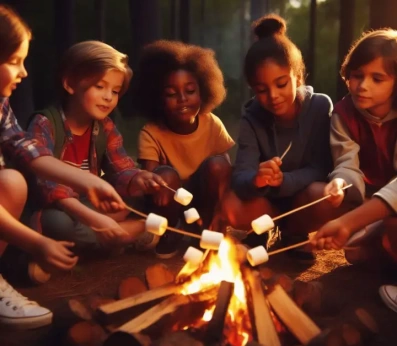In the past decade, the rise of digital platforms like YouTube, TikTok, Instagram, and countless others has redefined content creation at every level—from the bedroom vlogger to the big-budget production studios ESPN.
With shifting audience attention spans, expectations and consumption habits, success now hinges on a delicate balance of authenticity, engagement, and data-driven strategy.
What’s clear is that there’s no one-size-fits-all approach anymore, but if there’s one thing that holds true, it’s this: great stories will always find an audience.
The New Age of Content Creation
The days when traditional media outlets dominated the content landscape are long gone.
Now, anyone with a smartphone can potentially build an audience and become a content creator. Platforms like YouTube, which began as a space for user-generated videos, have grown into global powerhouses where major brands and independent creators coexist. YouTube is now the second-largest search engine in the world, right behind Google (which owns it), with over 500 hours of video uploaded every minute. Today having a YouTube channel is as important as having a website.
But it’s not just about quantity—it’s about quality and connection. Consumers today crave authenticity and relatability. Perfectly polished corporate ads are often skipped or ignored in favor of user-generated content that feels real.
This is why many brands are now embracing influencer marketing, where personalities with established followings tell stories about products or services in a way that feels organic and genuine.
Marketers are learning that people don’t just want to be sold to—they want to feel like they’re part of the story. Part of a community of like minds
Data-Driven Storytelling:
The Role of YouTube and Other Platforms One of the most significant shifts in content creation is the emphasis on data.
Content creators today aren’t just artists; they’re also analysts. Every platform, from YouTube to TikTok, provides creators with a treasure trove of analytics. Views, likes, comments, shares, watch time, audience demographics—you name it.
This data helps creators fine-tune their storytelling to better connect with their audience. YouTube, for instance, has evolved into a platform where creators must understand their metrics to thrive.
Simply producing good content is not enough; creators need to know when to post, what thumbnails attract clicks, and how to optimize video titles and descriptions for maximum reach.
It’s no longer just about crafting the perfect video—it’s about crafting the perfect video that works within the algorithm. But here’s the kicker: algorithms favor engagement.
This means that content that sparks conversation or controversy often gets more visibility. Enter “rage-bait” content—emotionally charged material designed to provoke reactions. It’s the reason why sometimes, the loudest voices get the most attention.
As seen with ESPN’s recent shift, even major networks are capitalizing on this trend. High-energy, polarizing personalities like Stephen A. Smith are prioritized over thoughtful, in-depth analysis from the likes of Zach Lowe, simply because the former generates more online buzz and shares.
ESPN’s Strategy Shift:
The Rise of Rage-Bait ESPN’s recent layoff of NBA writer Zach Lowe is a prime example of this shift. Lowe, a unicorn in sports media who excelled across multiple formats—writing, podcasting, and TV—was known for his thoughtful, deep analysis of basketball. But in an age where quick, viral content is king, his work was behind a paywall and required a longer attention span than many of today’s viewers possess.
In contrast, Stephen A. Smith, with his larger-than-life persona, can command millions of views for something as simple as walking through a tunnel before a Knicks game. The data speaks volumes: people want content they can quickly consume, react to, and share. Rage-bait works because it taps into emotions, whether it’s anger, excitement, or amusement.
ESPN, recognizing this, has leaned into a content strategy that prioritizes engagement over depth. This strategy isn’t limited to sports media. Marketers across all industries are grappling with the same dilemma: how do you create content that connects deeply with your audience without sacrificing engagement?
The answer, it seems, lies in blending authentic storytelling with a clear understanding of the platform’s strengths and audience behavior.
Marketing Statistics:
The Role of Video and YouTube From a marketing perspective, video content has never been more powerful.
According to Wyzowl’s 2023 Video Marketing Statistics Report,
91% of businesses use video as a marketing tool, and 96% of marketers say video is an important part of their strategy.
What’s more, 88% of people say they’ve been convinced to buy a product or service by watching a brand’s video. YouTube remains the dominant platform for long-form content, but it’s facing increasing competition from TikTok and Instagram, which specialize in shorter, snackable videos.
Marketers now need to diversify their strategies to meet audiences where they are. Short-form video is booming, with TikTok leading the charge and Instagram Reels playing catch-up. Brands that can effectively tell their stories in 15 seconds or less will have a significant advantage in the years to come.
Yet, YouTube still holds significant value for marketers. It’s a platform where people come to learn, be entertained, and, crucially, to make purchasing decisions. Research shows that YouTube is the most influential platform when it comes to driving purchases, with 70% of viewers saying they bought from a brand after seeing it on YouTube.
The platform’s vast library of educational content, how-to videos, and product reviews creates opportunities for brands to engage audiences in ways that feel informative rather than intrusive.
The Evolution of Storytelling
The changing landscape of content creation is forcing storytellers to rethink how they approach their craft.
On platforms like YouTube, content creators must find ways to be both engaging and educational. They need to deliver value upfront, whether that’s in the form of entertainment, information, or inspiration.
More importantly, they must tailor their stories to the format of the platform they’re using. YouTube allows for longer-form storytelling, where creators can delve deep into a topic. TikTok and Instagram, on the other hand, require brevity and immediacy.
Creators on these platforms must hook viewers in the first few seconds, or risk losing them to the endless scroll. It’s a challenge, but it also opens up new possibilities for creative storytelling.
. The Future of Content Creation:
What Lies Ahead So, where does content creation go from here? One thing is certain: the landscape will continue to evolve. Artificial intelligence (AI) and machine learning are already playing a significant role in how content is recommended and consumed.
As these technologies improve, content creators will have even more tools at their disposal to craft personalized, engaging stories that resonate with their audience. But amid all these technological advancements, one truth remains: the story is still king.
Platforms may change, algorithms may evolve, and audience preferences may shift, but the power of a well-told story will never go out of style. Whether you’re a bedroom vlogger or a big-budget brand, success in content creation comes down to this: tell a story worth hearing, and the audience will follow.
In this new era of content creation, the stakes are higher than ever, but so are the opportunities.
Every creator, no matter the size of their audience, has a chance to make an impact and tell their story.
The key is to embrace the changing landscape, use data to your advantage, and above all, keep telling stories that matter.
Until Next Edition.
Stay in Focus.
CQ



